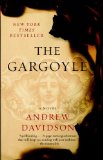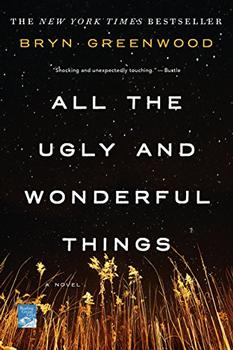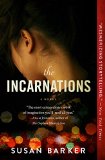Summary | Excerpt | Reading Guide | Reviews | Beyond the book | Read-Alikes | Genres & Themes | Author Bio

The Gargoyle is one of those books that will thoroughly
annoy some readers, while leading others practically panting to convince their
friends to read it. It has received an unusual amount of pre-publication press,
particularly for a first-time novelist, and it is ambitious in its content,
spanning centuries and locales. Then there is the range of subject matter:
correlations to Dante's Inferno, combined with tales of a medieval
scriptorium, mixed into the daily life of a modern day burn victim who was a
former porn king. Is it any surprise then, that this book already has plenty of
detractors as well as ardent fans?
The novel opens with a strong hook. The first person narrator, who is also the
story's protagonist, describes his horrendous (and utterly stupid) car accident
– a crash caused by drugs and alcohol and a vision of burning arrows. After a
brief anecdotal diversion into the history of the middle ages, readers are
whisked with the narrator from the scene of the accident to the hospital burn
unit where he will spend about a third of the book. While the narrator is
treated for his many injuries, he contemplates an elaborate suicide, planning to
end his life as soon as he is released from the hospital. But a strange woman
arrives one day – the narrator's first and only visitor – who eventually changes
his mind.
This woman, Marianne Engel, is portrayed as physically tempting, yet possibly
mentally unstable. She acts as if she has known the narrator for years and even
lifetimes at their first meeting. She tells elaborate and subtly linked love
stories. She carves grotesques and gargoyles which are sold to the rich. She
speaks multiple languages and translates ancient texts. She brings ridiculous
feasts of international delicacies to the hospital and dotes on a dog named
after a Greek pastry. It is through Marianne that the novel's narrator finds
genuine love, a plot piece that Davidson does nothing to conceal, since the
story's suspense is found elsewhere.
From the opening pages, author Andrew Davidson has no qualms about offering his
readers graphic detail. The Gargoyle contains numerous stomach-turning
descriptions of the protagonist's agony during his recovery, as well as frank
discussion about the world of pornography. Even Davidson's descriptions of
Marianne Engel's artistic gargoyle-carving frenzies can disconcert. This
tendency toward the gross may dissuade some readers, but most will recognize
Davidson's intentional use of grotesque realism to unify his fantasy. In this
book, as in life, the line between beautiful and disgusting is often blurred.
The Gargoyle is, above all, entertaining. Davidson's work of seven years
is the kind of pleasure reading that is hard to find: fantasy and suspense
combined with intelligent research and strong writing. The pace slows a bit too
much during some of Marianne's narrative diversions but, on the whole, the novel
is a successful page turner. The Gargoyle is sometimes raw, sometimes
delicately detailed. It offers a modern and historic love story that, though
predictable, cannot be called conventional and a rogue narrator that manages to
win over the reader despite his bad behavior.
![]() This review was originally published in The BookBrowse Review in August 2008, and has been updated for the
September 2009 edition.
Click here to go to this issue.
This review was originally published in The BookBrowse Review in August 2008, and has been updated for the
September 2009 edition.
Click here to go to this issue.

If you liked The Gargoyle, try these:

All the Ugly and Wonderful Things
by Bryn Greenwood
Published 2017
A beautiful and provocative love story between two unlikely people and the hard-won relationship that elevates them above the troubled Midwestern backdrop of their lives.

by Susan Barker
Published 2016
An original novel about a Beijing taxi driver whose past incarnations over one thousand years haunt him through searing letters sent by his mysterious soulmate.
These are not books, lumps of lifeless paper, but minds alive on the shelves
Click Here to find out who said this, as well as discovering other famous literary quotes!
Your guide toexceptional books
BookBrowse seeks out and recommends the best in contemporary fiction and nonfiction—books that not only engage and entertain but also deepen our understanding of ourselves and the world around us.